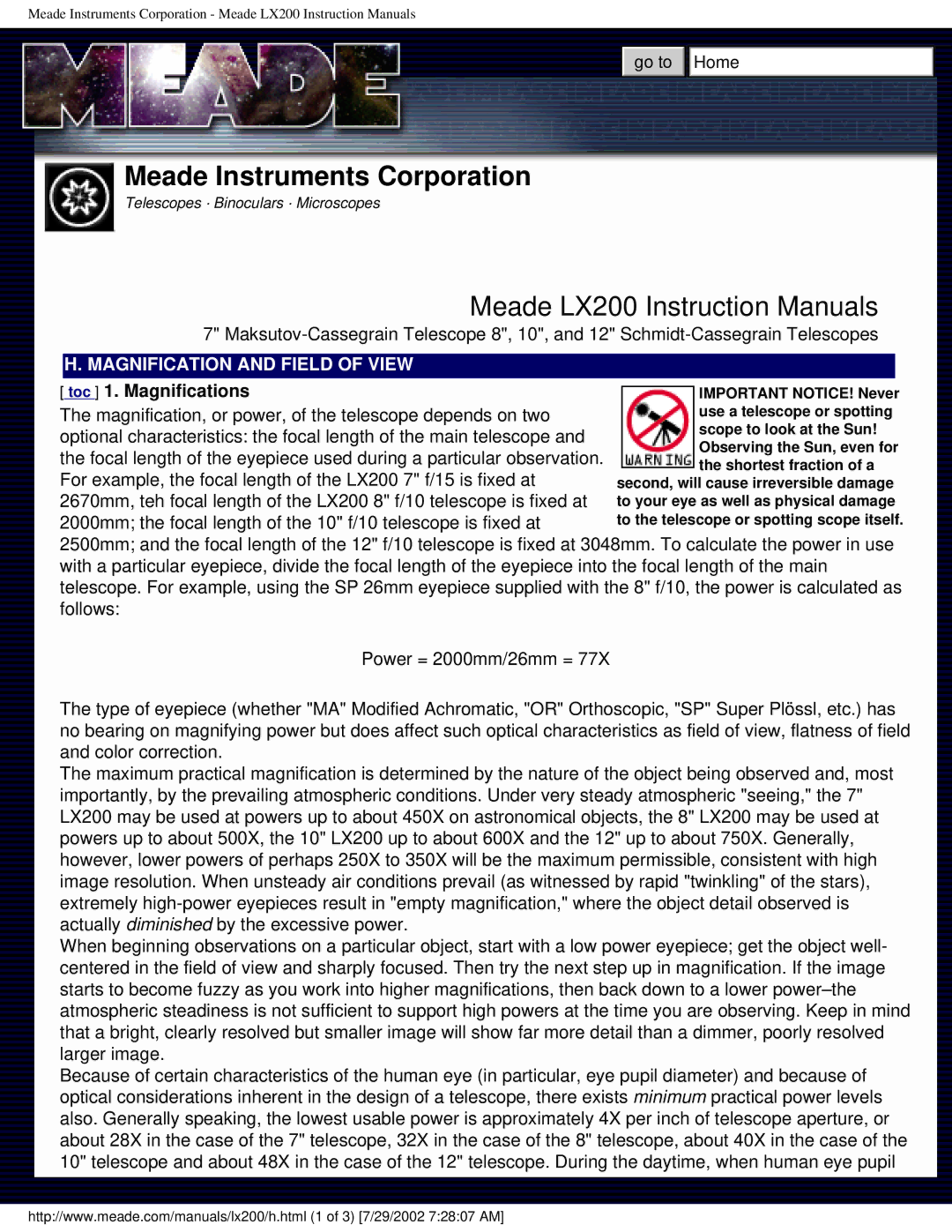
Meade Instruments Corporation - Meade LX200 Instruction Manuals
go to ![]()
![]() Home
Home
Meade Instruments Corporation
Telescopes · Binoculars · Microscopes
Meade LX200 Instruction Manuals
7"
H. MAGNIFICATION AND FIELD OF VIEW [ toc ] 1. Magnifications
The magnification, or power, of the telescope depends on two optional characteristics: the focal length of the main telescope and the focal length of the eyepiece used during a particular observation. For example, the focal length of the LX200 7" f/15 is fixed at 2670mm, teh focal length of the LX200 8" f/10 telescope is fixed at 2000mm; the focal length of the 10" f/10 telescope is fixed at
2500mm; and the focal length of the 12" f/10 telescope is fixed at 3048mm. To calculate the power in use with a particular eyepiece, divide the focal length of the eyepiece into the focal length of the main telescope. For example, using the SP 26mm eyepiece supplied with the 8" f/10, the power is calculated as follows:
Power = 2000mm/26mm = 77X
The type of eyepiece (whether "MA" Modified Achromatic, "OR" Orthoscopic, "SP" Super Plössl, etc.) has no bearing on magnifying power but does affect such optical characteristics as field of view, flatness of field and color correction.
The maximum practical magnification is determined by the nature of the object being observed and, most importantly, by the prevailing atmospheric conditions. Under very steady atmospheric "seeing," the 7" LX200 may be used at powers up to about 450X on astronomical objects, the 8" LX200 may be used at powers up to about 500X, the 10" LX200 up to about 600X and the 12" up to about 750X. Generally, however, lower powers of perhaps 250X to 350X will be the maximum permissible, consistent with high image resolution. When unsteady air conditions prevail (as witnessed by rapid "twinkling" of the stars), extremely
When beginning observations on a particular object, start with a low power eyepiece; get the object well- centered in the field of view and sharply focused. Then try the next step up in magnification. If the image starts to become fuzzy as you work into higher magnifications, then back down to a lower
Because of certain characteristics of the human eye (in particular, eye pupil diameter) and because of optical considerations inherent in the design of a telescope, there exists minimum practical power levels also. Generally speaking, the lowest usable power is approximately 4X per inch of telescope aperture, or about 28X in the case of the 7" telescope, 32X in the case of the 8" telescope, about 40X in the case of the 10" telescope and about 48X in the case of the 12" telescope. During the daytime, when human eye pupil
http://www.meade.com/manuals/lx200/h.html (1 of 3) [7/29/2002 7:28:07 AM]
